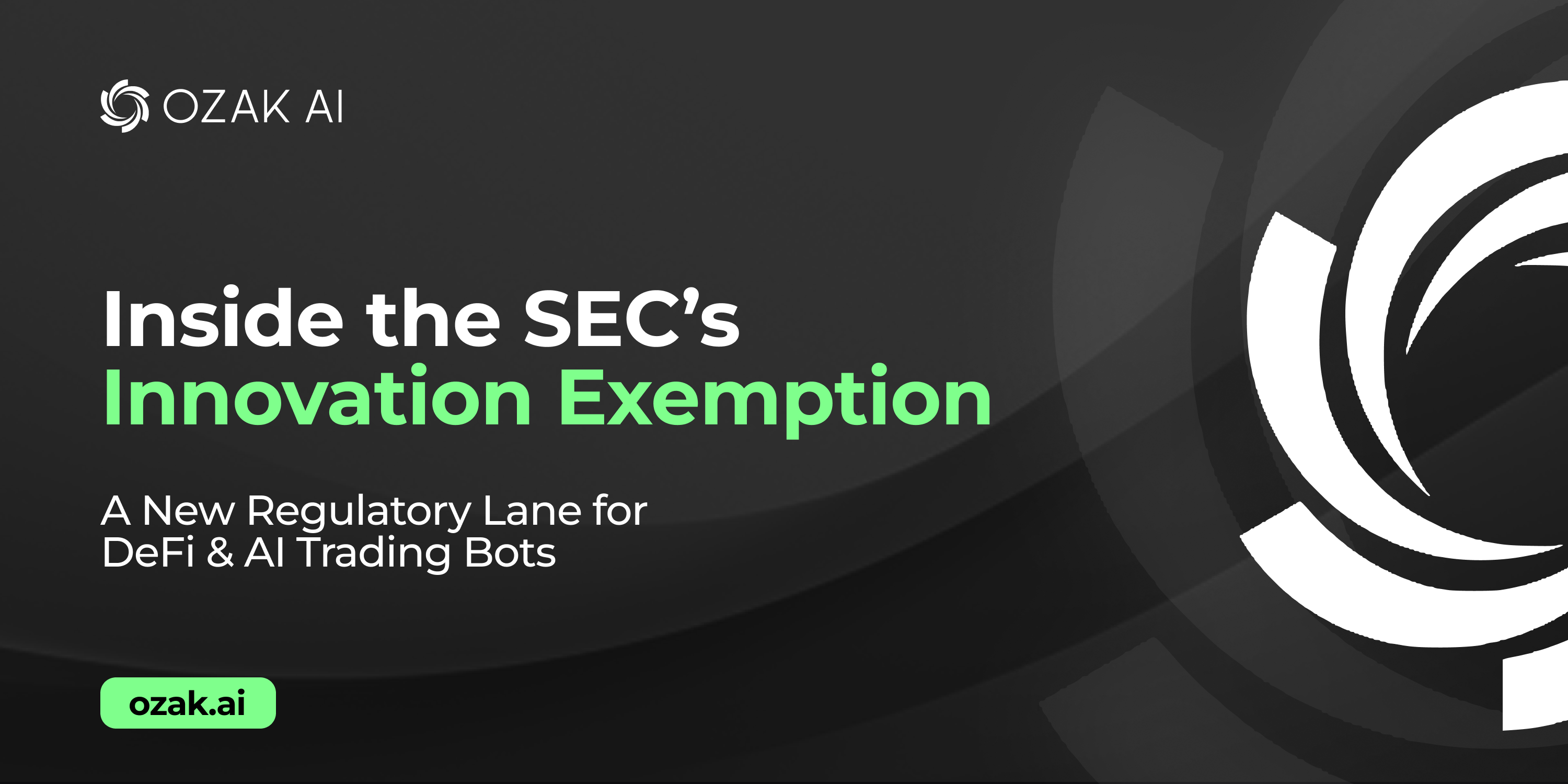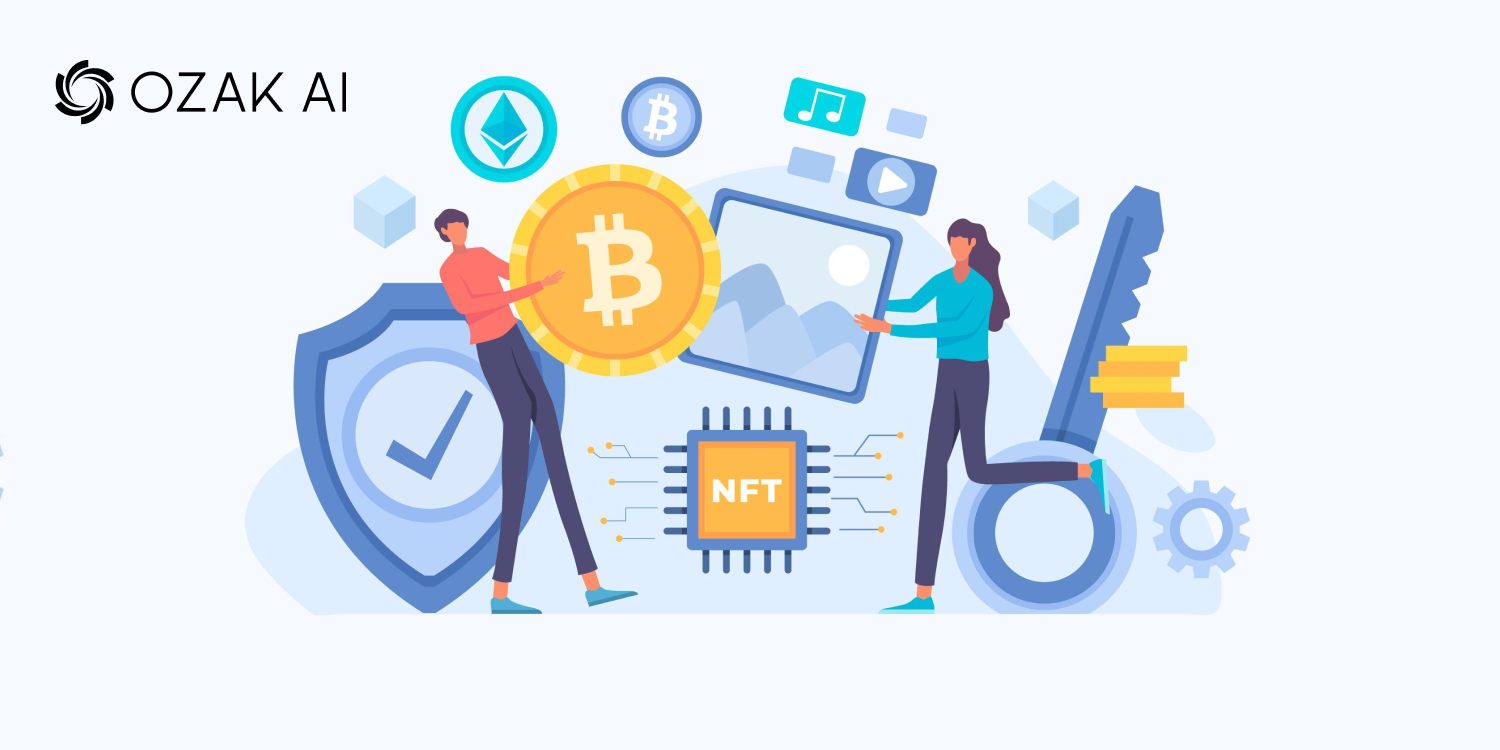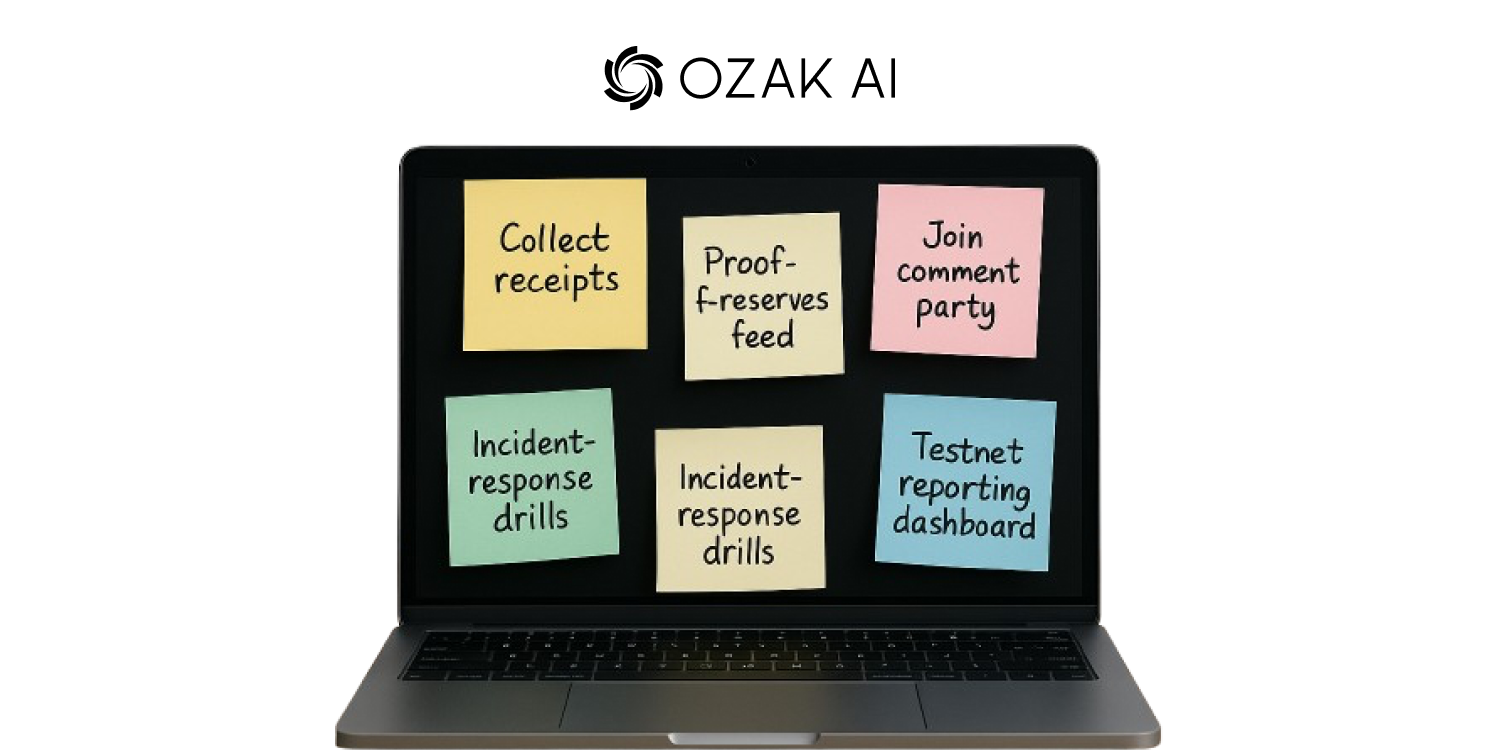
On June 9 2025 in Washington D.C., the US SEC’s new boss Paul Atkins walked into the agency’s “DeFi and the American Spirit” round-table and basically said, “Hey, maybe we stop suing every smart-contract dev in sight and give innovators a lane.”
Atkins told staff to sketch a conditional “innovation exemption.” In plain English, that’s a fast-track permission slip letting bona-fide DeFi protocols and AI trading bots ship products first and sort paperwork later - so long as they meet some transparency guardrails.“Engineers shouldn’t need a law degree just to publish code,” he quipped, drawing solid applause from the room.
This is a big shift because under former chair Gary Gensler, the vibe was “sue first, FAQ later.” Lawmakers even branded Gensler the most “destructive” SEC chair in history for his regulation-by-enforcement crusade. Atkins’ friendlier stance is the first real sign that era might finally be over.
What Exactly Is an “Innovation Exemption”?
Think of it as a temporary permission slip from the SEC that says, “Go ahead, launch your DeFi thing (or spin up that AI trading bot), just keep the receipts and don’t rug-pull anyone while we hash out the fine print.”In legal-speak, it’s conditional exemptive relief - time-boxed, data-driven, and yanked if you blow the homework.
We’ve seen this movie before
The U.S. has a habit of loosening the regulatory belt when fresh tech shows up:
- Reg A+ mini-IPOs (2015): let startups raise up to $50 m (later $75 m) without the full Wall Street paperwork stack.
- FinTech sandboxes (UK FCA, 2016): a “safe space” where firms could test new products with real users while regulators watched from the sidelines.
The new exemption borrows that sandbox vibe but updates it for on-chain code and AI models that never sleep.
What might make the cut?
Chair Atkins name-dropped a few early contenders:
- Pure DeFi protocols (DEXes, lending pools) that operate without a central kill-switch.
- Self-custody wallets & validators - because “holding your own keys is an American value.”
- Open-source devs who just publish code; they’re not suddenly “brokers” because someone forks their repo.
In short, if your project is transparent on-chain, doesn’t hide risk, and keeps user funds under user control, you’re likely in the frame. And yes, that includes AI trading agents that can prove every decision with an on-chain log - exactly the sort of thing Ozak AI’s tech already does out of the box.
Why Now?

Because America wants the crypto crown back.
Three months ago President Trump vowed to make the U.S. “the crypto capital of the world,” even floating a national crypto reserve to prove the point. The SEC’s friendlier tone slots neatly into that agenda: if D.C. doesn’t unclench, the capital (and tax dollars) will keep running offshore.
Congress is yelling “hurry up and write the rules.”
The new CLARITY Act - a 236-page digital-asset market-structure bill introduced May 29 - has both House finance and agriculture committees hollering for a unified framework. Hill staffers say the exemption is the SEC’s way of showing progress while the bill crawls through hearings.
Bipartisan AI jitters add extra heat.
Lawmakers on both sides just dropped the Protecting AI & Cloud Competition in Defense Act, signalling they’re watching automated systems (read: trading bots) as closely as tokens. The exemption lets regulators peek under the hood without strangling the bots in red tape first.
Everyone else already rolled out the red carpet
- Europe’s MiCA rules kick in on 30 June 2025, giving EU startups a passport to 27 markets.
- Hong Kong issued nine new virtual-asset licences in February, sprinting for the title of Asia’s crypto hub.
- Dubai’s VARA framework is live, onboarding projects at a pace New York can only envy.
And the money is moving fast.
Tokenised U.S. Treasuries - basically on-chain T-Bills - now top $7 billion in TVL, led by BlackRock’s BUIDL fund and Ondo Finance. If Wall Street can sling risk-free yield on-chain, the SEC can’t afford to scare the rest of DeFi out of the country.
Proposed Pillars of the Exemption (What We Know So Far)
Spoiler: none of this is final - these are the rough cuts floating around D.C. hallways. But the outline is getting clearer by the day.
Conditional Safe Harbor
Think of it as a “launch now, lawyer later” pass. Projects that meet some basic disclosure rules would get 12-to-24 months to operate without needing a full registration. Blow the guardrails and the SEC yanks the pass - kinda like losing your provisional driver’s licence for speeding.
“Code-Is-Speech” Protection
Atkins wants to stop criminalising copy-paste. If you’re just publishing open-source smart-contract code, you’re not automatically a broker-dealer or money-service business. In other words, GitHub commits shouldn’t need a subpoena.
On-Chain Transparency Requirements
No mystery meat balance sheets. Projects would need real-time proof-of-reserves, immutable trade logs and maybe even hashed AI-model checkpoints so a regulator (or anyone) can replay every decision. Basically: receipts, but on-chain.
Consumer Guardrails
Word around the water cooler is caps on how much a U.S. retail user can park in an exempt protocol, plus mandatory “oh-no-something-broke” response plans. Think sandbox with child-proof locks.
Exit & Ongoing Reporting
The pass isn’t forever. After the safe-harbor window you either:
- Graduate into full registration,
- Wind down and hand users their tokens back, or
- Convince the SEC to extend the pilot.
Expect quarterly data drops - similar to Reg A+ mini-IPO filings - so watchdogs can keep score.
TL;DR: ship fast, stay transparent, keep users safe, and have a grown-up plan for what happens when the clock runs out.
What Does This Mean for DeFi Protocols on the Ground?

DEXs & Lending Markets: faster listings, but live risk dashboards required
Remember how Uniswap spent a solid year sweating an SEC probe, only to have it quietly dropped in February? That U-turn already signalled softer hands ahead.
Under the exemption, uploading a new token pair might feel more like pushing a Git commit than filing an S-1 - but you’ll have to beam out real-time pool health (liquidity, bad-debt ratio, oracle status) so regulators and users can see trouble coming before it nukes the pool.
Staking-as-a-Service: green light if it’s non-custodial and crystal clear
Five days ago, the SEC’s policy shop said most proof-of-stake rewards aren’t securities so long as validators don’t promise price pumps. That guidance plus the exemption means your staking front-end can finally call itself legal - provided it passes through rewards instantly and publishes validator slashing history on-chain.
DAO Governance Tokens: long-awaited clarity (ish)
Draft language in the CLARITY Act carves out governance tokens that are purely for running the protocol - think voting rights, not dividend cheques.
That said, last November’s Lido DAO ruling shows courts still see liability if token-holders look too much like general partners.
The exemption’s likely fix? 24/7 public ledgers of who votes, how treasury funds move, and whether any one whale secretly calls the shots.
TL;DR: If you’re shipping a DEX, lending pool, staking wrapper, or DAO today, the innovation exemption flips the question from “Will Gary sue us?” to “Can we prove, in real time, that we’re not scamming anyone?”
Special Focus: AI-Powered Trading Bots
Wait, what counts as “AI” anyway?
The SEC’s enforcement team just warned firms about “AI-washing” - slapping a buzzword on plain-vanilla code. They’re eyeballing anything that learns from data: reinforcement-learning market makers, deep-net signal hunters, even chatbots whispering trade ideas. If your bot only follows a fixed if-this-then-that script, you’re still in algo-land; once it retrains itself on fresh order books, congrats, you’re wearing the AI badge.
Show your work: model-risk disclosure
- Regulators now expect a paper trail on training data provenance, bias tests, and back-test results - same way they expect a VAR report from a hedge fund.
- GAO’s brand-new study says supervisors will likely tighten those rules further, especially if AI outputs drive real trades.
In plain English: don’t train on junk data, and keep the receipts if you want to stay in the sandbox.
“Explainability on-chain” (yes, that’s a thing)
Ozak’s favourite hack is to hash each model checkpoint and shove it on-chain every time we retrain. That way anyone - user, auditor, or cranky regulator - can prove the bot they’re watching is the same one we tested last week. We also log every inference call (just inputs and hashes, no alpha leakage) so you can replay a trade and see why the bot pulled the trigger.
The upside: no more pseudo broker-dealer nightmares
Under the draft exemption, an autonomous market-making bot that can cough up those hashed logs might register under the safe harbor instead of wading through a full broker-dealer licence. That’s a massive legal tax slashed off your burn rate - and a green light to deploy predictive agents 24/7 without asking a human to click “confirm” on every fill. The SEC’s 2025 exam priorities explicitly list AI-driven trading tools as a focus, so having built-in transparency isn’t just nice - it’s survival gear.
Bottom line: if your bot can’t explain itself, the exemption door might still slam shut. Bake the receipts in from day one and you’ll breeze through the checkpoint.
Opportunities for Builders & Funds
Launch in the U.S. without the offshore gymnastics
If the “innovation exemption” lands the way Atkins sketched it, you’ll no longer need the Cayman-foundation-plus-Delaware-LLC yoga routine just to serve American users. Ship your protocol from a U.S. ZIP code, keep the proof-of-reserves feed humming, and stay inside the safe-harbor rails. Suddenly New York looks as friendly as Dubai.
Smaller legal bill, bigger audit budget
A full broker-dealer or ATS registration can run seven figures in lawyer time. A safe-harbor filing? More like the cost of a decent bug-bounty round. That leaves cash for the stuff that actually keeps users safe - formal verification, smart-contract audits, and model-risk stress tests GAO keeps nagging banks about.
Institutions finally have a playbook
BlackRock’s tokenised-Treasury fund is pushing $3 billion and the total tokenised-T-Bill pie just cracked $7 billion. TradFi desks clearly want on-chain yield - they just need a compliance wrapper they can show the risk committee. An SEC-blessed exemption gives banks, brokers, and even pension funds a clean rule set for tapping DeFi liquidity, hedging with AI bots, or parking idle cash in tokenised bonds.
Reality check: none of this removes the need for grown-up ops. You’ll still publish quarterly data drops, log every model checkpoint, and hold incident-response drills. But compared with the old “see you in court” model, that’s a trade most founders (and their CFOs) will take any day.
Open Questions & Risks - a Reality Check Before We All Pop Champagne

How “conditional” is conditional?
Atkins keeps saying the safe harbor will have “guardrails,” but hasn’t dropped numbers. Will retail users be capped at $2 k, $10 k, or “YOLO at your own risk”? How often will you have to file those transparency reports - quarterly like Reg A+, or every time a whale sneezes? Until the draft term sheet lands, founders are guessing.
Whose turf is it, anyway: SEC or CFTC?
If your protocol touches derivatives - think perpetuals, prediction markets, anything with leverage - the CFTC might still crash the party. The CLARITY Act tries to split the map, but ex-CFTC chair Tim Massad is already grumbling that the bill “adds confusion” and the agencies may issue conflicting rules if Congress keeps dragging its feet.In short: you could win an SEC exemption and still catch a CFTC subpoena.
Can old lawsuits haunt new exemptions?
Remember the Lido DAO saga where a California judge said a DAO can be sued like a general partnership? That ruling hasn’t been overturned, and plaintiffs’ lawyers are licking their chops. If you advertise your token as “governance only” but a judge thinks it smells like a security, safe harbor or not, you’re back in court.
Will the rest of the world play nice?
Europe’s MiCA rules start enforcing passporting and stable-coin caps on 30 June 2025. Unless Brussels and Washington hammer out mutual recognition, a protocol that’s kosher with the SEC might still be a regulatory outlaw in Paris or Berlin. Same story for Hong Kong, Dubai, and Singapore - each racing ahead with their own licenses. The exemption is great, but it isn’t a global hall pass.
Bonus buzzkill: Even with softer rules, the bad guys haven’t taken a holiday - DeFi exploits still drained over $130m in 2025 so far. If you blow up user funds, no exemption will save you from Twitter court - or class-action court.
Translation: the innovation lane looks real, but it still has speed limits, overlapping jurisdictions, and potholes big enough to wreck your protocol if you’re not paying attention.
The Ozak AI Point-of-View
We’ve at Ozak AI have been building for this moment since day one.
Our prediction agents already live on a trust layer the SEC can audit in real time
Every prediction our bots make gets hashed, stamped, and written onchain. That means a regulator - or any curious nerd - can replay each inference, see which model version fired, and check that the code running today matches the one we demoed last week. No black boxes. No “just trust us.”Our presale is live and early investors have already 5x’d their money. Click here to check it out.
Action Checklist for Teams (print-me-out, stick-on-the-wall edition)

Timeline to Watch
Conclusion
If you’ve been holding your breath waiting for U.S. regulators to finally “get” DeFi and AI trading, this is the first real gulp of fresh air we’ve seen in years. The innovation exemption won’t magically erase hacks, bad actors, or turf fights between agencies, but it does clear a lane for honest builders to ship products without lawyering themselves into oblivion.
The big picture: transparent code, verifiable data, and on-chain receipts are about to matter as much as slick UX. That’s exactly the world Ozak AI was designed for - one where every prediction, every trade, every model tweak is provable on-chain.
So keep an eye on the Federal Register and sharpen those disclosure docs. And maybe block a little calendar time this summer to hit “Submit Comment.” When the safe harbor opens, you’ll want to be the first protocol through the gate - because first movers usually set the tone (and scoop the liquidity).
Head over to our website: https://ozak.ai, to learn more and take that first step into the future of AI and Web3 with Ozak AI. You can also follow us on X and Telegram to get all the latest updates.


